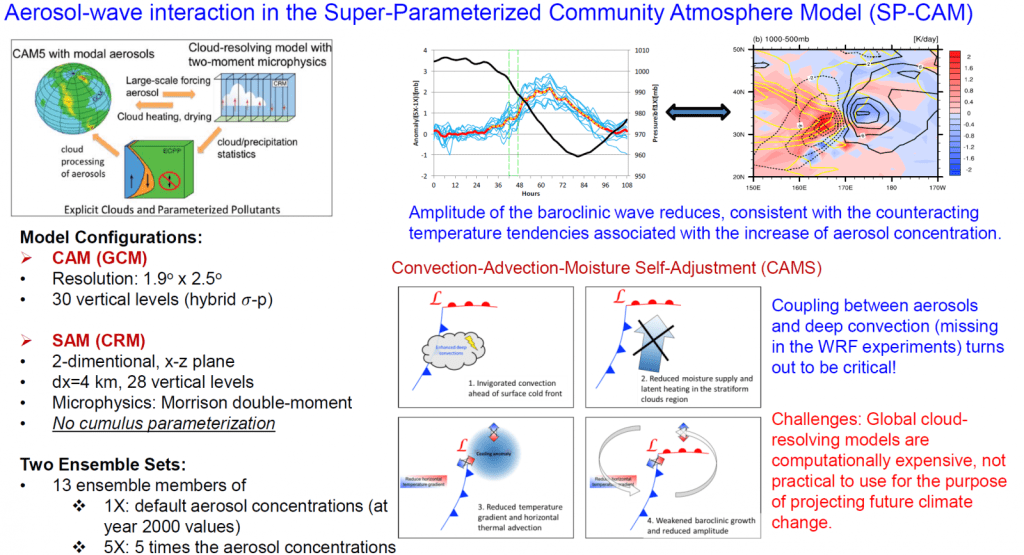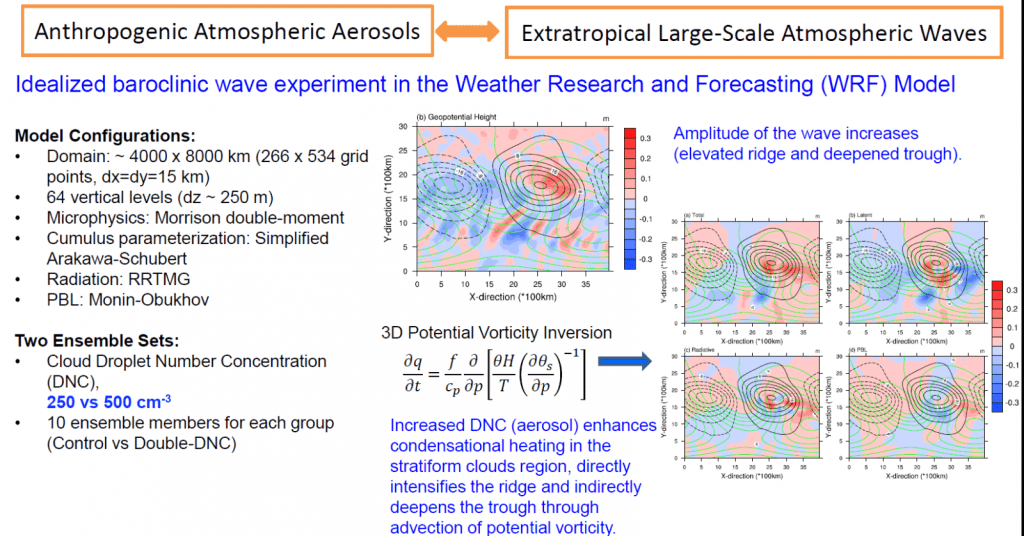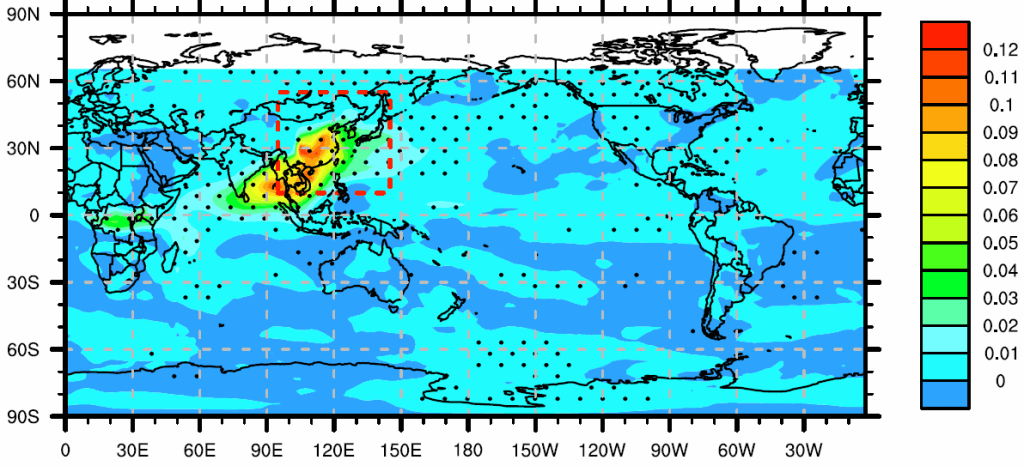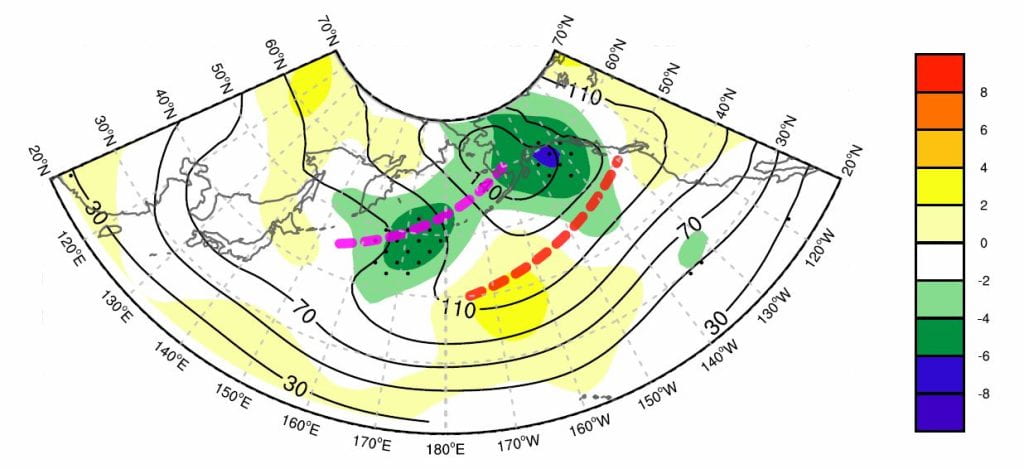Impact of Environmental Aerosols on a Developing Extratropical Cyclone in the Super-Parameterized Community Atmosphere Model
The impacts of environmental aerosols on the growth of an extratropical cyclone in a realistic winter flow setting are investigated using the Super-Parameterized Community Atmosphere Model (SP-CAM) where cloud-scale dynamics and thermodynamics are explicitly resolved. An examination of the results from 13 ensemble pairs suggest that the growth rate of the cyclone is temporally reduced as a result of increased aerosol concentrations. A “convection-advection-moisture self-adjustment” (CAMS) mechanism of aerosol-cyclone interaction is proposed to explain this finding. Specifically, the weakened growth is unambiguously attributed to the weakening of the cold advection underneath the mid-tropospheric trough of the cyclone. The weakened cold advection is in turn driven by a decrease of the zonal temperature gradient that is tied to the reduced latent heating in the stratiform cloud region of the cyclone. Invigoration of convection ahead of the cold front by aerosols is then found to be directly responsible for a suppressed moisture supply into the stratiform cloud region and thus the reduced latent heating here.

Initial Transient Response of an Intensifying Baroclinic Wave to Increases in Cloud Droplet Number Concentration
Ensemble simulations of an idealized baroclinic wave were conducted with the WRF model to investigate the effects of increased cloud droplet number concentration (DNC) on the development of the wave. Statistically significant differences between experiments where DNC was doubled and the control experiments were identified for an initial transient period before the cyclone enters the stage of rapid intensification. Doubling of DNC increases total cloud water in the model, lowers cloud level and enhances latent heating to the east of the surface low, which strengthens the mid-tropospheric ridge. Subsequent changes in dry dynamical processes (e.g., advection of potential vorticity (PV)) as a result of the ridge strengthening lead to the deepening of the trough and ultimately produce a mild yet statistically significant strengthening of the baroclinic wave as a result of the DNC-doubling. Piecewise PV inversion further confirms the critical role that latent heating change plays in strengthening the mid-tropospheric ridge.

Influence of East Asian Anthropogenic Aerosols on the North Pacific Atmospheric Circulation
In this project, we explore with the NCAR CAM5 model the dynamical consequences of East Asian anthropogenic aerosols that propagate across the North Pacific basin in boreal winter. Emphasis is placed upon the aerosol effect (both direct and indirect) on the energy budget of synoptic-scale and low-frequency disturbances and the associated cloud, moisture transport and precipitation processes.

Differences of the 550 nm aerosol optical depth (AOD) between CAM5 perpetual winter simulations with and without East Asian anthropogenic aerosol emission.

